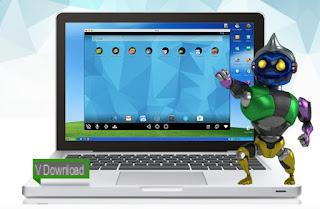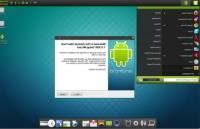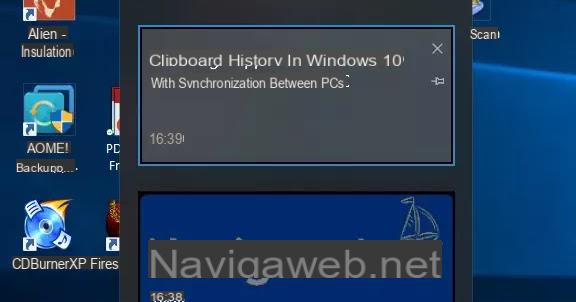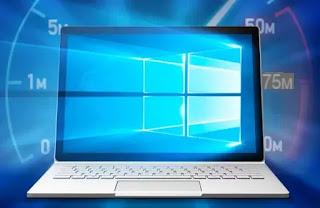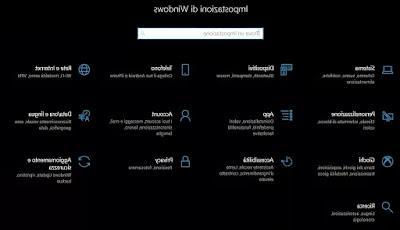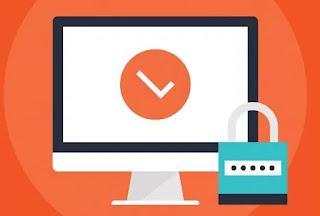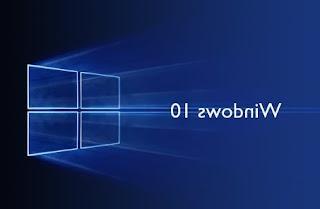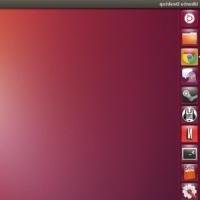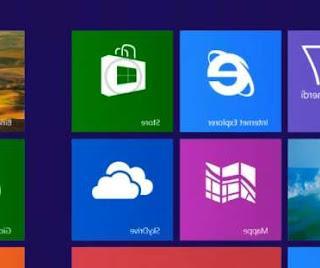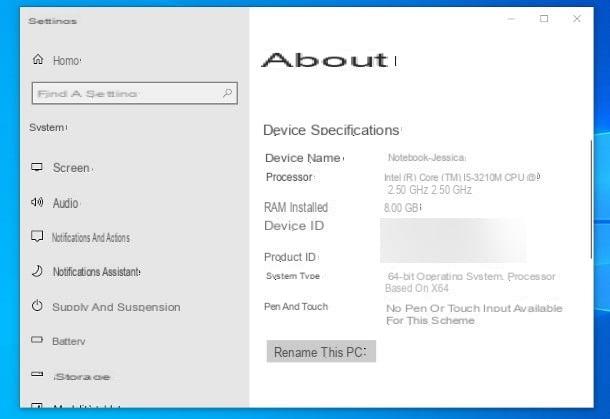Basic operations
Before going into the heart of this guide, I want to focus on some tips or features that can help you if you are new to a computer with Windows 10. In the next few lines, I will help you take the first steps on this operating system.
Useful key combinations
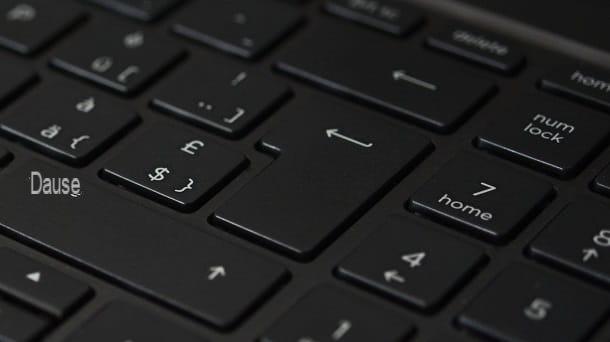
Using the keyboard connected to your computer, you can use key combinations which can facilitate you in carrying out some operations. Below, I'll list some that you can use on Windows 10.
- Ctrl + C, to copy one or more selected files.
- Ctrl + X, to cut one or more selected files.
- Ctrl + V, to paste one or more previously copied (or cut) files.
- Ctrl + Z, to undo the last operation performed.
- Ctrl + A, to select each file in a folder.
- Alt + F4, to close an active window of File Explorer or software.
- Alt + Tab, to switch between active windows.
- Ctrl + Shift + Esc, to start the Task Manager.
- Shift + Delete, to confirm the deletion of a file, without transferring it to the recycle bin.
- Windows + D, to show and hide open windows on the desktop.
- Windows + E, to open File Explorer.
- Windows + I, to open the Settings of Windows.
- Windows + [.] (the punctuation mark "point”), Opens the keyboard Emoji.
The combinations that use the key Ctrl they can also be performed within software to use functions similar to those I have indicated to you. Just as an example, the combination Ctrl + A on a text allows you to select it in its entirety.
If you want to learn more, I suggest you read my guide on how to use the PC keyboard.
File Explorer

In the taskbar at the bottom, you can see the icon with the folder symbol, which is equivalent to the tool File Explorer Windows. This allows you to access folders and files on your computer hard drive or external drives.
When you access a folder, you can view other folders or files within it. If you click on the tab Show at the top, you can choose how to display the file icons by selecting one of the items in the box layout. For example, by pressing on the item Details, you can distribute the files on a list that shows you the date size and other information about the items in the folder.
If you right-click on an empty spot inside the folder, in the context menu that is shown to you, you can change the display of the files through the items Show, Sort by e Group by.
In the tab HomeInstead, you can perform some operations on the files, using the buttons you see in the bar: you can copy and paste or move an object or delete or rename it. To use these functions, select the file, by making a single click on it, and then press one of the buttons in the top bar, according to the operation you need to perform.
On the left sidebar, however, you can view some system and account folders to quickly access them, while at the top you can view the section Quick access, which contains all the folders added by you for instant access.
If you want to add a folder to quick access, the process is simple: open the folder you prefer and, in the tab Home at the top, press the button Add quick access.
If you want to learn more about the topics related to the other features on File Explorer, I recommend that you read my guides on how to view file extensions and how to view hidden files and folders.
Add users

If your computer is used by multiple people, you can decide to create other accounts. To add one, what you need to do is open the Settings Windows, using the combination Windows + [i] or by pressing the icon ofgear found in the menu Home.
In the screen you see, click on the button Account and then select the item Family and other people from the left sidebar. In the section Other people, award-winning Add another user to this PC and, in the window that is shown to you, first click on the wording I don't have this person's login information and then Add a user without a Microsoft account.
At this point, add the name of the person who will use the computer, via the text box Username, and, if necessary, enter a login password. Then press the button NEXT to confirm the creation of the local user.
If, on the other hand, you have some information about the person who will be using the computer, such as theirs Outlook email, after pressing the button Add another user to this PC, fill in the text fields you see on the screen, so as to add a new user connected to theMicrosoft account entered by you. By connecting a Microsoft account to the user account, you can synchronize all the information and preferences of the latter with Microsoft's servers and therefore with all your Windows devices.
If you want, you can also add restrictions for users with standard privileges, therefore not as an administrator, such as limits on the hours of use of the PC: I told you about it in more detail in my tutorial dedicated to the subject.
Changing the system language

When you have installed and configured Windows 10, you've probably set that as your language In your lenguagen company. However, if you want to add a different one, perhaps because you want to practice learning a new one, just access the Settings Windows 10, by pressing the key combination Windows + [i] or by pressing the icon ofgear found in the menu Home.
At this point, in the newly opened screen, press on the item Date / time and language and select the wording Geographic area and language, from the left sidebar. Then locate the button Add a language and choose a language from the list that is shown to you. Then click the button NEXT and, on the next screen, uncheck the items you don't want to add.
If you want the Windows 10 interface to be changed to the new language you selected, keep the box checked Set as my Windows display language and then press the button Install. This will download the components necessary for the installation of the new language of your choice.
If you want more information on how to manage languages on Windows, I suggest you read my tutorials on how to change the language on your PC and how to change the language on Windows 10.
Customize the desktop
Whether you are an adult or a teenager, one of the first things you do after logging into Windows 10 for the first time is to customize your desktop according to your personal tastes. In the next few lines, I'll tell you about how to change the desktop background and its resolution, as well as show you some features to customize other tools in the Windows interface.
Change the screen resolution

change the screen resolution, right-click on any empty spot on the desktop and, from the context menu you see, press the item Display settings. From the screen that is shown to you, select the resolution from the drop-down menu that you find under the heading Resolution.
If the resolution you set does not suit your needs, click on the button Restore, that you see in the center of the screen. If not, click on the button instead Keep changes, to save the resolution of your choice.
You can also change the size of the texts and icons, in case they are too small for you to see them well. Also from this panel, then choose the percentage of resizing from the drop-down menu that you find under the heading Change the size of text, apps, and other elements. I tell you in detail about how to change the resolution of the Windows 10 desktop in this guide of mine.
Disable notifications

Su Windows 10 the notification center, which shows messages from the system and third party software. If you are not interested in this feature or do not want to receive specific notifications, you can disable them from the panel Settings on Windows 10.
To do this, press the key combination Windows + [i], click on the item System, in the screen you see, and then presses on Notifications and actions, in the left sidebar. Moving on OFF the levers you see, you can disable different types of notifications: for example, if you do not want to receive notifications from the app, move to OFF the lever near the wording Get app notifications and other senders.
In the Get notifications from these senders, you can view all applications and software that interact with the Notification Center. By moving the lever adjacent to them up OFF, you will no longer be shown live notifications for that specific Windows app or service. In any case, you can learn more by consulting my guide on how to delete Windows 10 notifications.
Change theme and background
If you want change the theme and desktop background of your computer, open the panel of Settings Windows 10, using the key combination Windows + [i] (or by pressing the icon ofgear found in the menu Home) and its voice Customization present in the window that opens.
At this point, in the left bar, select the item Background and then choose an image from those you see on the screen or use the button Shop by Department, to import one saved on your computer. Then use the drop-down menu that you find under the heading Choose a location, to set the method used by Windows to deploy the image to the desktop.

In Windows 10, you can change the theme used on the desktop. Don't you know what it is? It is a set of settings that change the desktop background, the colors used for windows, Windows sounds, and the mouse cursor. If you want to change the theme, in the Settings Windows, choose the item Customization and, in the left sidebar, click on the wording Temi.

Now, choose a theme from those you see below, or press the button Get more themes in the Microsoft Store to download more. If you want to know where to download other themes, including unofficial ones, I suggest you read my guide dedicated to the subject.
Change Start menu and taskbar
La taskbar Windows, which appears at the bottom edge of the screen, can be customized by moving it to other locations or by changing the way windows are combined.
To do this, open the Settings Windows, using the key combination Windows + [i] or by pressing the icon ofgear found in the menu Home and press on the item Customization. In the left sidebar, select the wording Application bar, so as to view all the parameters to customize this tool.

To change the position of the taskbar, use the drop-down menu under the heading Location of the taskbar on the screen; to display active windows differently on the taskbar, use the options available under the heading instead Combine taskbar buttons.
You can, for example, decide to hide this bar. This is possible by moving the lever up ON at the entry Automatically hide the taskbar in desktop mode.
The menu Home Windows 10 shows you the installed software and applications. However, you can customize it from Settings Windows (accessible with the combination Windows + [i] or by pressing the icon ofgear found in the menu Home): then go to the section Customization and then press on the item Home contained in the left sidebar.

From the right screen, you can set some customization options, such as the full screen mode reminiscent of Windows 8, which can be activated by moving the lever to ON in correspondence with the wording Use full screen mode for Start. I told you in detail about how to change this tool, in my guide on how to change the Start menu on Windows 10.
Application and software management
On Windows 10, in addition to programs, you can install the applications available on the Microsoft Store. If you need to know the tools that this operating system provides you to manage the installed software, I recommend that you read the next lines carefully.
Uninstall apps and software

As I already mentioned in the previous paragraph, all software and applications installed in Windows 10 are accessible through the menu Home. However, in case you want to perform the uninstall of one of these, you will need to access the section App, which you find in Settings Windows 10 (accessible via combination Windows + [i] or by pressing the icon ofgear found in the menu Home).
Then select the item App and features from the left sidebar and scroll through the list of programs and applications that you see on the screen. Then click on the one you want to remove and press the button Uninstall. Some programs may require you to follow additional steps to confirm uninstallation, whose instructions are shown on the screen.
If you want to know more information on how to remove a program from your computer, I suggest you read my guide dedicated to the subject.
Set default apps

If you have multiple software installed on your computer that perform the same function, such as web browsers, you can choose which one to use when you perform an automatic action (such as opening a link).
By accessing the panel of Settings on Windows (Windows + [i]), go to the section App and then choose the item Predefined app from the left sidebar. On each category that is shown to you, by clicking on the current program used, you can display a context menu from which to select other similar programs installed by you on your computer.
In the example I gave you in this paragraph, under the heading Web browser, by clicking Google Chrome, I am offered to choose among the other browsers installed, such as Microsoft Edge, Firefox or Internet Explorer.
You can also decide to select a specific program based on its extension. In this case, scroll down the screen and click on the wording Choose default apps by file type. You will be offered all the extensions known to the system so far, for each of which you can set a software by pressing the button Choose a default setting or by clicking on the currently associated program.
If you want to learn more about this topic, then you just have to reach my guide on how to change the default programs, where I showed you how to perform this procedure on Windows 10.
Disable startup processes

If you want disable a program that starts automatically when you log into Windows 10, press the key combination Ctrl + Shift + Esc to open the Task Manager (Activity management).
Now, select the tab Start and right-click on the process you see on the screen, labeled with the words Qualified, in the column State. In the context menu that is shown to you, then choose the item Disable: in this way, the next time you restart your computer, the software you have disabled will no longer run automatically when you log in to Windows.
If your computer starts to run slower, you probably have too many processes running when Windows starts. In this case, I suggest you read my guide on how to speed up the computer, in which I explain in detail, how to disable active processes when starting the operating system.
Close a process

If a software you have open has crashed and no longer responds to commands, you can force it to close by terminating the process associated with it. To do this, open Activity management, using a combination of keys Ctrl + Shift + Esc, and reach the tab Processes.
At this point, scroll through the list you see and locate the currently blocked software, which you should find in the section Applications. Then right-click on it and press on the item End activity, in the context menu that is shown to you. If you want to know more about this topic, I suggest you read my dedicated guide.
Make Windows 10 secure
Su Windows 10, as in other operating systems, it is necessary to put into practice some precautions, to keep the computer protected from any threat. In the next few lines, I will show you some tips and some features that can help you in this regard.
Set a login password

If multiple family members have access to your computer and you want to protect your privacy, you can think of set a password to the PC account. To do this, click on the button Home and right-click on the thumbnail for your Windows account. In the context menu you see, click on the item Modify impostazioni account.
In the newly opened panel, click on the entry Access options present in the left sidebar. Now choose one of the suggested methods to add protection to your Windows account. First set one Password, via the button Add, to then configure the additional protection systems available, such as for example Windows Hello, to use your fingerprint or facial recognition to unlock access to your account.
You can also set a PIN or a Graphic password. Also, you can set the Dynamic lock, which works in a similar way to the Smart lock of Android, which unlocks access when a Bluetooth-connected device is nearby. For more information, I suggest you read my tutorial on how to put a password on your PC, in which I have indicated all the procedures to be carried out to achieve this purpose.
Windows Updates

One piece of advice I give you in order not to run into problems or bugs on your computer with Windows 10, is to always keep it updated. Basically, the operating system is set up to always keep up to date.
However, you can check if some updates are available by starting the panel Settings Windows (use combination Windows + [i] to access it, or press the icon ofgear found in the menu Home) and clicking on the section Update and security. Then choose the item Windows Update, in the left sidebar, and press the button Check for updates, to immediately perform a search on Microsoft servers. If there are any updates, they will download and install automatically.
If, on the other hand, you do not want to receive Windows updates, because they may slow down your computer or Internet connection, then I recommend that you consult my guide on how to disable Windows 10 automatic updates.
Windows Firewall and Defender

If you don't own antivirus software, I'd be glad to know that about Windows 10 a tool is integrated, called Windows Defender, which guarantees protection from viruses and other files that can compromise the functioning of the operating system itself. It is very effective and in the most recent comparative tests it did not look disfigured in the face of far more noble solutions, perhaps for a fee.
Inside, there is also a firewall to monitor inbound and outbound connections and a tool, called SmartScreen, to defend the device while browsing with Microsoft Edge and block potentially harmful applications from running. Your intervention is not required to activate Windows Defender, but you can open its panel to perform some manual operations.
To do this, open the panel of Settings Windows 10 (using the key combination Windows + [i] or or by pressing the icon ofgear found in the menu Home), click the section Update and security and then choose the item Windows security, in the left sidebar. Then press the button April Windows Defender Security Center, to access the main screen of this tool and proceed as you prefer.
All Defender functions are accessible through the icons in the left sidebar. For example, if you want to manually scan files on your computer, click the icon with the symbol of a shield and then press the button Start Analysis.
If you don't want to rely on this integrated protection tool, then you can fall back on other software used for the purpose, which I told you about in this guide of mine. You can also decide to disable it completely Windows Defender, topic I told you about in this dedicated tutorial of mine.
Backup and restore
Su Windows 10 it is possible to back up the files on the computer and, in case of operating system malfunctions, also to restore it. These features are present within the section Update and security, in the Settings Windows 10. In the left bar, you can access them by clicking on their respective items Backup e Restoration.
The first tool allows you to back up your personal files on your computer by sending them to an external drive or another partition on your hard drive. By clicking the button Other optionsthen, you can specify the frequency of the backup and the folders to include or exclude from the process.

Through, the functionality Restorationinstead, by pressing the button Start, you can choose two options: an operating system restore keeping all personal files (Keep my files) or a full recovery that results in the loss of all data (Remove all).

If you want to learn more about Windows 10 file backup, you just have to read my tutorial on how to backup on Windows 10. If, on the other hand, you are interested in a detailed guide to restore Windows 10, I suggest you consult my guide dedicated to the topic.
Other useful tips for using Windows 10

The tips to make the best use Windows 10 they don't end there. There are many tools and features integrated into this operating system, so new ones are often introduced through automatic updates.
In case you want to keep up, I recommend that you consult my website configurehow.com often or check the section dedicated to this topic, accessible via this link.
How to use Windows 10



